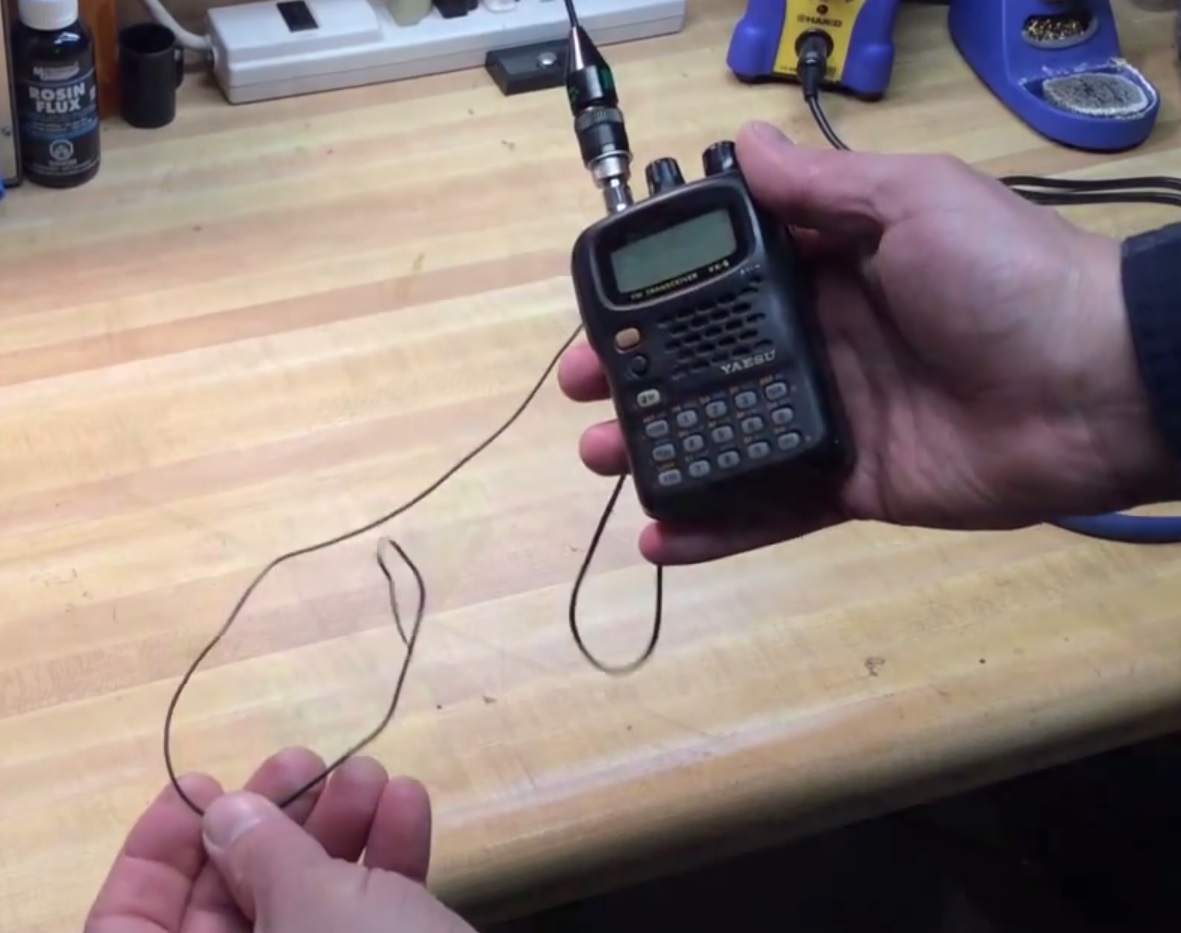Interesting Ideas: A counterpoise for your HT

“Tiger Tail” counterpoise wire on a Yeasu VX-5 HT (hackaday.com photo)
Saw this idea earlier today on the Ham Radio Go Kits group on Facebook. It’s called a “Tiger Tail” – something I’ve never heard of in my 26 years in ham radio. Turns out it’s actually a thing, and not a bad idea, in theory – you attach a quarter-wavelength piece of wire to the ground side of your antenna connector on your handy-talky and just let it hang down — making your vertical HT antenna a full dipole. I’m not certain exactly how much this would improve things if you were actually holding the radio–the fact that you are holding the radio, especially if it’s made of metal, actually makes your body part of the antenna system and probably throws it off anyway. God knows what happens to your antenna system if this thing is clipped to your belt. But if you had the radio sitting on a wooden table, it might really help.
The Facebook link pointed to a page at hamuniverse.com called “HT Antenna Modification for Increased Performance” based on an article by C. Edward Harris KE4SKY. We all know instinctively that the factory standard “rubber duck” antenna provided with a radio is usually just a bit better than a dummy load. Well, apparently this has actually been tested by the National Bureau of Standards (unfortunately no footnote on this or I’d check it out). According to the article:
When limited to “barefoot” operation, with a “rubber duck”, HT antennas are not very efficient nor adequate for communications. They fail miserably as an effective radiator due to their design! They are nothing more than an extended dummy load acting as an antenna!
The following modification will help you to make the most of your HT by increasing the factory antenna’s efficiency and the cost is just a piece of wire!FACTS ABOUT HT ANTENNAS
The National Bureau of Standards tests of Public Safety high band and amateur 2-meter antennas indicate that a “rubber duck” has -5db, “negative gain” compared to a quarter wave held at face level. In terms of effective radiated power (ERP), this means that a 5 watt HT with rubber duck, radiates only 1 watt. Operating an HT on your belt results in another -20db attenuation, reducing ERP to 50 milliwatts! That’s 1/20 of one watt!
UHF results are no better…Due to the design of the factory installed HT antenna, you are effectively missing half of the antenna!
He goes on to explain the lengths of wire depending on the band you want to use — “about 19.5″ on 2m, 11.5″ for 220 and 6.5″ for 440” (pretty close to ¼ wavelength) — and describes two ways to attach it — winding the end of the wire around the BNC or SMA connector, or voiding the radio warranty and soldering the wire directly to the ground plane on the PC board.

Dale N6JSX’s method of attaching the counterpoise to your radio (hamuniverse.com photo)
Toward the end of the page is an addition by Dale Kibichek N6JSX explaining a method of attachment using a crimp-on ring connector by notching the ring to make it fit. I think I might give this a try.
There was an article on Hackaday last year that featured a video by Larry Shaunce WDØAKX on how to do this — I read Hackaday religiously so I’m not sure how I missed this. Larry uses the ring connector method in this video, and also tries attaching it to a grounded case screw on the radio itself:
So, radio friends, have you ever used a “tiger tail” and does it really help? If it does, maybe I’ll put one on the VX-8DR to improve my low power APRS transmissions.
Published from DFW, Texas.

in a nutshell there fantastic. I bought one through a local club about ten years ago who was making and selling them as a fund raiser. Although the main reason for buying it was the fund raiser as living in the city hitting repeaters wasn’t a challenge. What I didn’t t expect were hams who I would talk to couldn’t believe I was using a HT. They thought I was on a mobile. It also improved my position when some of the repeaters a little further out then the city limits